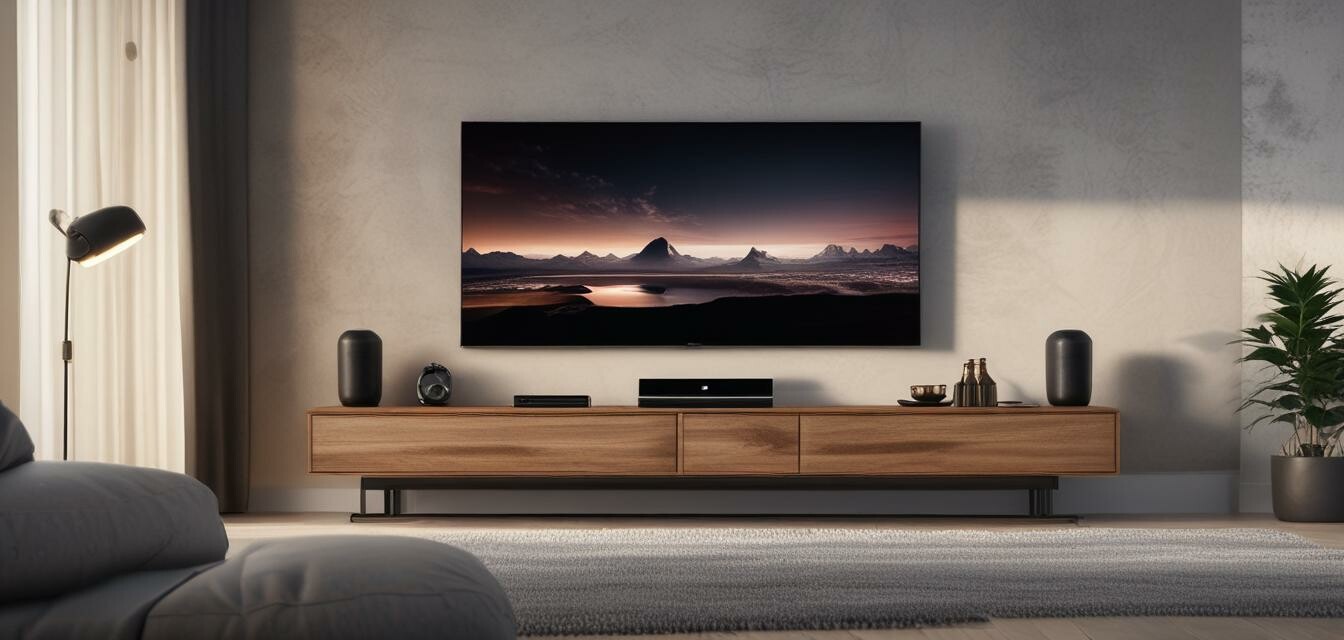
How to Improve Your TV’s Sound with a Soundbar
Key Takeaways
- A soundbar significantly enhances your TV’s audio quality.
- Proper placement and setup are crucial for optimal sound performance.
- Understanding connectivity options helps to integrate the soundbar seamlessly.
- Adjusting audio settings can lead to a more personalized listening experience.
- Consider the features that suit your entertainment needs, including voice enhancement and surround sound simulations.
The experience of watching your favorite shows or movies can be greatly enhanced by improving the sound. A soundbar can deliver impressive audio quality that dramatically enriches your TV viewing experience. This guide will help you understand how to set up and maximize your soundbar’s potential while tackling common issues you might face.
Understanding the Basics of Soundbars
Before diving into how to improve your TV's sound, let's first understand what a soundbar is and its benefits:
| Feature | Description |
|---|---|
| Design | Compact and stylish, fitting easily into any living room setup. |
| Audio Quality | Provides rich, clear sound that enhances dialogue and sound effects. |
| Easy Setup | Majority of soundbars can be connected with a single cable. |
| Versatility | Can be used with various devices beyond just your TV. |
Choosing the Right Soundbar
Choosing the right soundbar will depend on your specific needs. Consider the following factors:
- Size: Make sure to choose a soundbar that fits well with your TV size.
- Connectivity: Look for TVs with HDMI ARC, optical, or Bluetooth connections for more flexibility.
- Features: Features such as built-in subwoofers or surround sound modes can enhance your experience.
- Budget: There is a wide range of prices, so determine what you are willing to spend.
Setting Up Your Soundbar
Once you’ve chosen the ideal soundbar, it’s time to set it up correctly:
- Placement: Position the soundbar directly under or above your TV for the best acoustics.
- Connection: Use HDMI ARC, optical cable, or Bluetooth to connect your soundbar to the TV.
- Power On: Turn on the TV and soundbar, ensure the correct input is selected on the soundbar.
- Audio Settings: Adjust the settings on both the TV and soundbar for optimal performance.
Adjusting Audio Settings
After the initial setup, tweaking the audio settings can greatly enhance your listening experience:
- Volume Levels: Find a balance that’s comfortable for your viewing environment.
- Sound Modes: Experiment with sound modes (like music, cinema, and dialogue) based on what you’re watching.
- Equalizer Settings: Most soundbars allow you to adjust bass and treble; tailor these for your personal preference.
Common Issues and Troubleshooting
Sometimes, issues may arise while using your soundbar. Here are some common problems and solutions:
Tips for Troubleshooting
- Check all connections if the sound does not come through the soundbar.
- Ensure the appropriate audio output is selected on your TV settings.
- Restart your devices if you experience syncing issues between audio and video.
- Consult the soundbar's manual for specific troubleshooting advice.
Conclusion
Improving your TV’s sound quality with a soundbar is a straightforward process. By understanding the features, setting it up correctly, and adjusting the audio settings, you can transform your home entertainment experience. For more extensive guides on soundbars and audio enhancements, check out our Buying Guides or our News and Trends.
Pros
- Enhances audio clarity and volume.
- Easy installation process.
- Can connect with various devices easily.
- Offers a space-saving solution compared to component speaker setups.
Cons
- May lack the depth of a full surround sound system.
- Potential compatibility issues with older TV models.